Menu

THE BLACKSMITH
KENSHIRO HATONO
- Choosing a selection results in a full page refresh.






















Usually ready in 1 hour
| Length | 215 mm |
| Total Length | 373 mm |
| Steel | Aogami (Blue) Super |
| Handle | Walnut |
| Ferrule | Wenge |
| Rockwell | 62-63 |
| Height Spine to heel | 54 mm |
| Width at Spine | 2.13 mm |
| Weight | 172 grams |
| Bevel | Double(50/50) |
The Blacksmith
Kenshiro Hatono is a young and very talented smith who has been working as an apprentice under Katsuyasu Kamo in the Takefu knife village for the past 6 years. He has recently started to deliver the first batch of knives made under his own name and we are beyond excited to have these incredible blades available in our shop. If you've been waiting to get your hands on a knife from Shiro Kamo, we highly recommend considering these as well. They have a taller blade than the offerings from Shiro Kamo which allows Hatono-san to put some killer grinds on them. Nice and then behind the edge which gently transitions to the thin spine, giving these knives an incredible cutting feel.
The Shape
The Gyuto is the Japanese equivalent to the western style chef's knife and is without a doubt the most versatile knife shape available. This particular gyuto is known as a kiritsuke style gyuto as it has a k-tip or reverse tanto tip. This is more an aesthetic style difference and doesn't change it's use cases much but we do find this style of tip excels at more intricate work like brunoise shallow and garlic, plus it looks pretty cool. This Gyuto has an excellent grind and transitions gradually from cutting edge to the thin spine; this coupled with it's relatively light weight put's it firmly in the lazer category.
Follow these care recommendations for your Japanese knives to protect the edge and keep them sharp as long as possible:
All products are shipped within 24 hours. We offer same day shipping for products ordered by 12pm. Please allow 4-7 business days for your shipment to arrive with standard shipping. Expedited shipping options are also available at checkout.
We offer free shipping on orders within Canada over $150 CAD and free shipping on orders to the US over $200 USD.
Curbside pick-up is available at both our Hamilton and Etobicoke locations.
To make sure our customers are always satisfied, we offer full refunds on products for 14 days after receiving them. See our full return policy for details.
More questions? Check out our shipping policy, our return policy, or reach out to us directly.
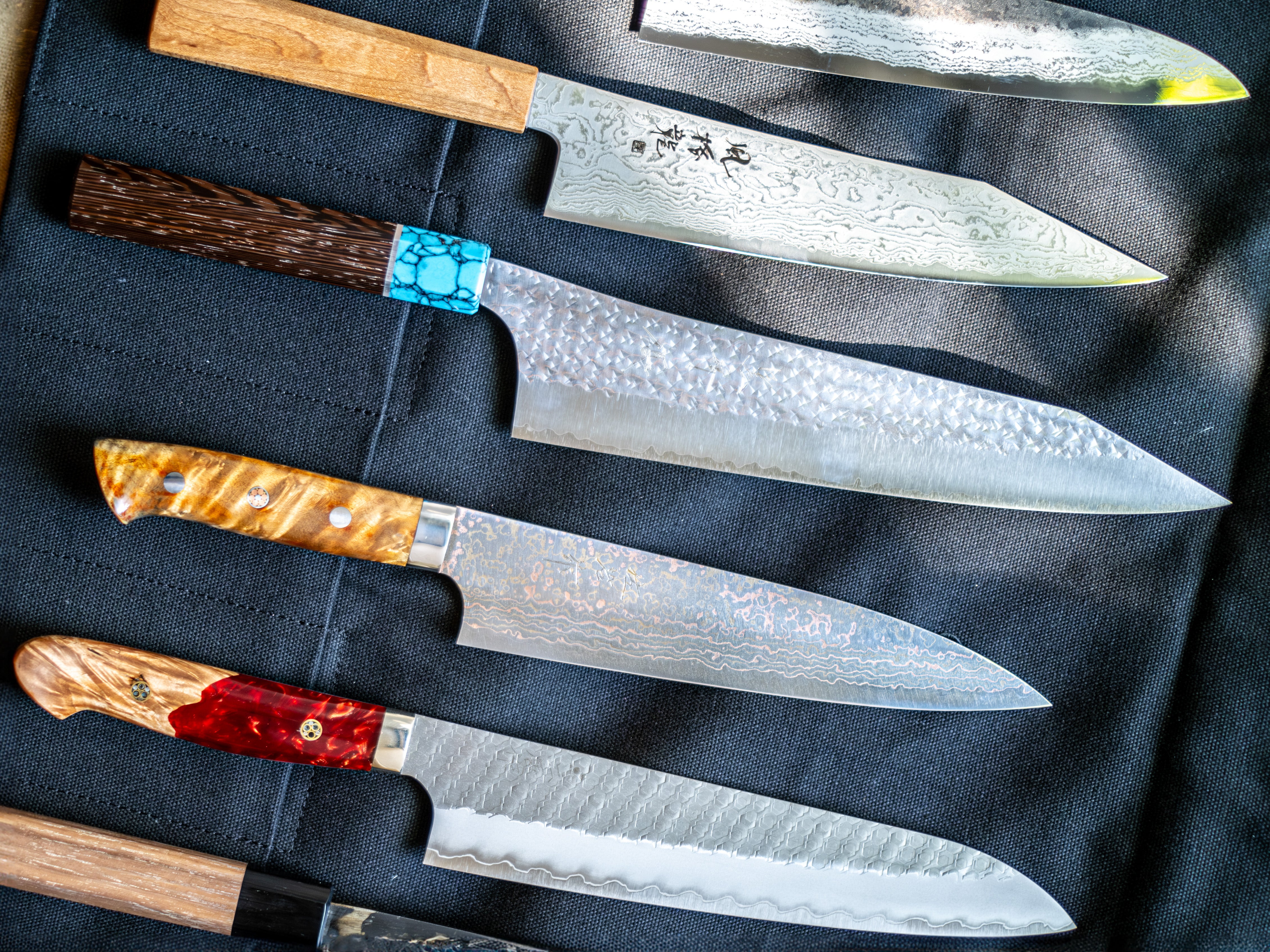
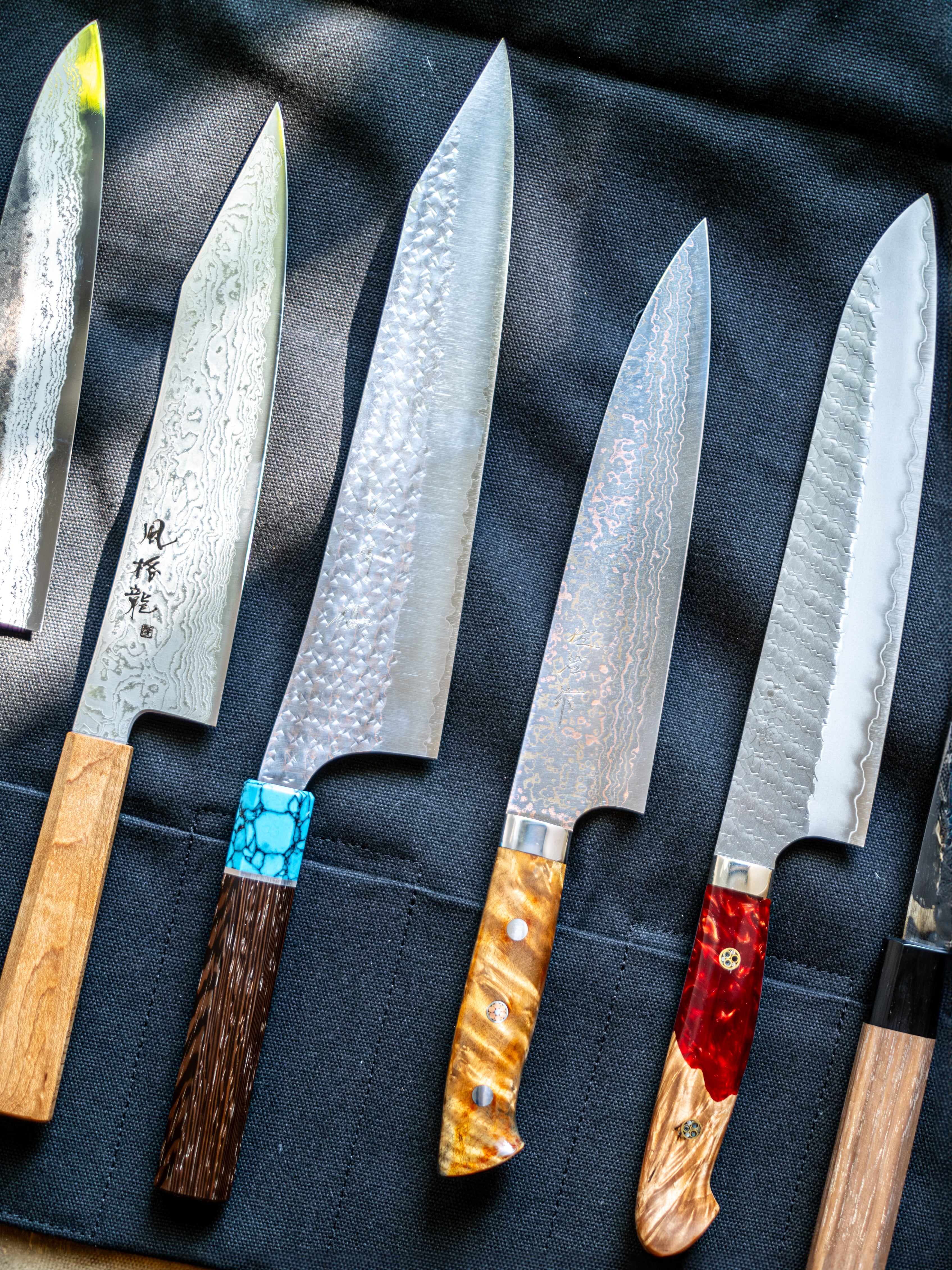
The Gyuto is the Japanese equivalent to the western style chef’s knife and is without question the most versatile knife shape. It ranges in size from 180 mm (7 inches) to 240 mm (10 inches), making it longer than the Santoku and Bunka. This length makes it adept at handling almost any task you'll come across in the kitchen, from mincing small ingredients to chopping through larger fruits and vegetables. The longer the knife, the more time it will take to grow accustomed to its length, but the more versatile it will be.
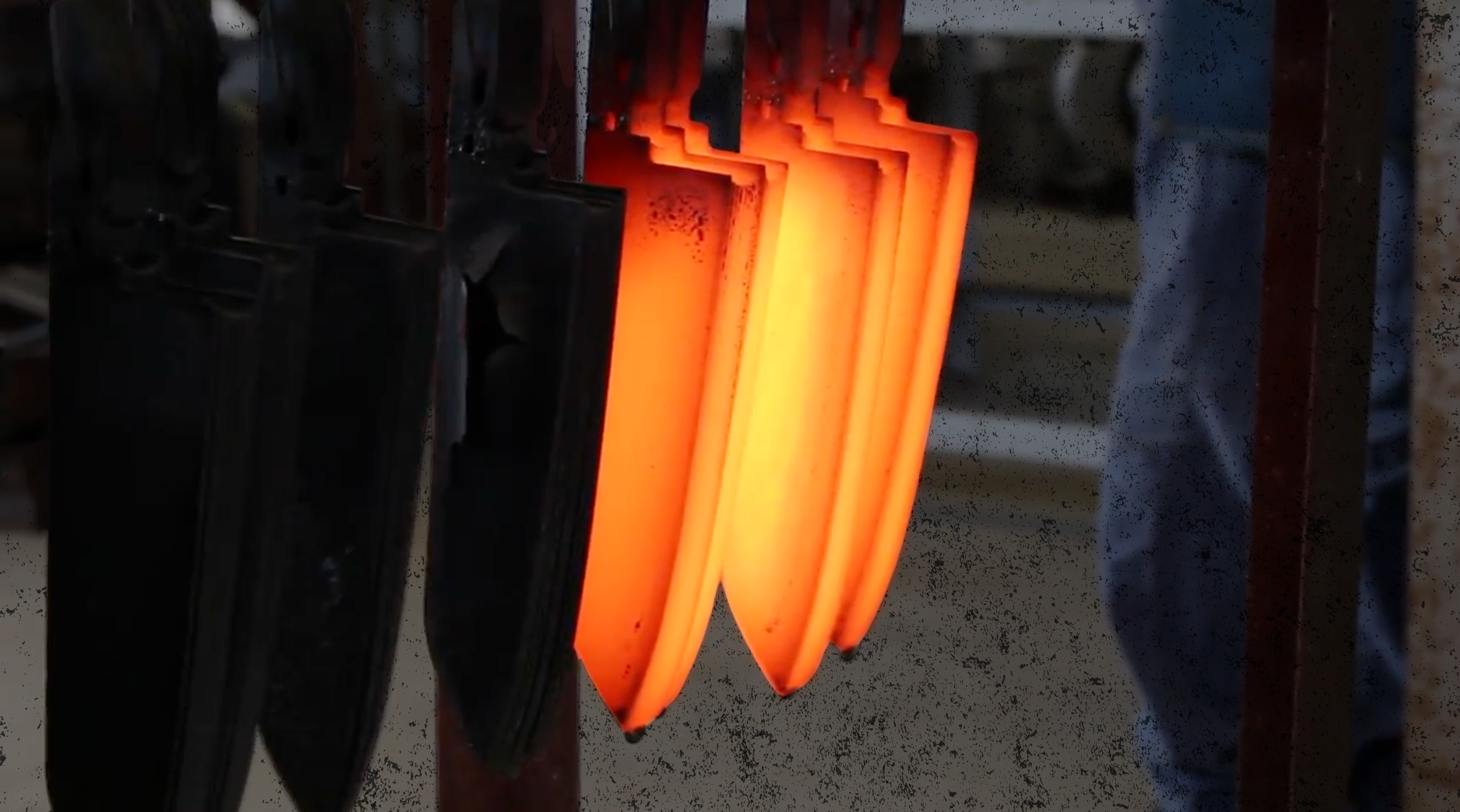
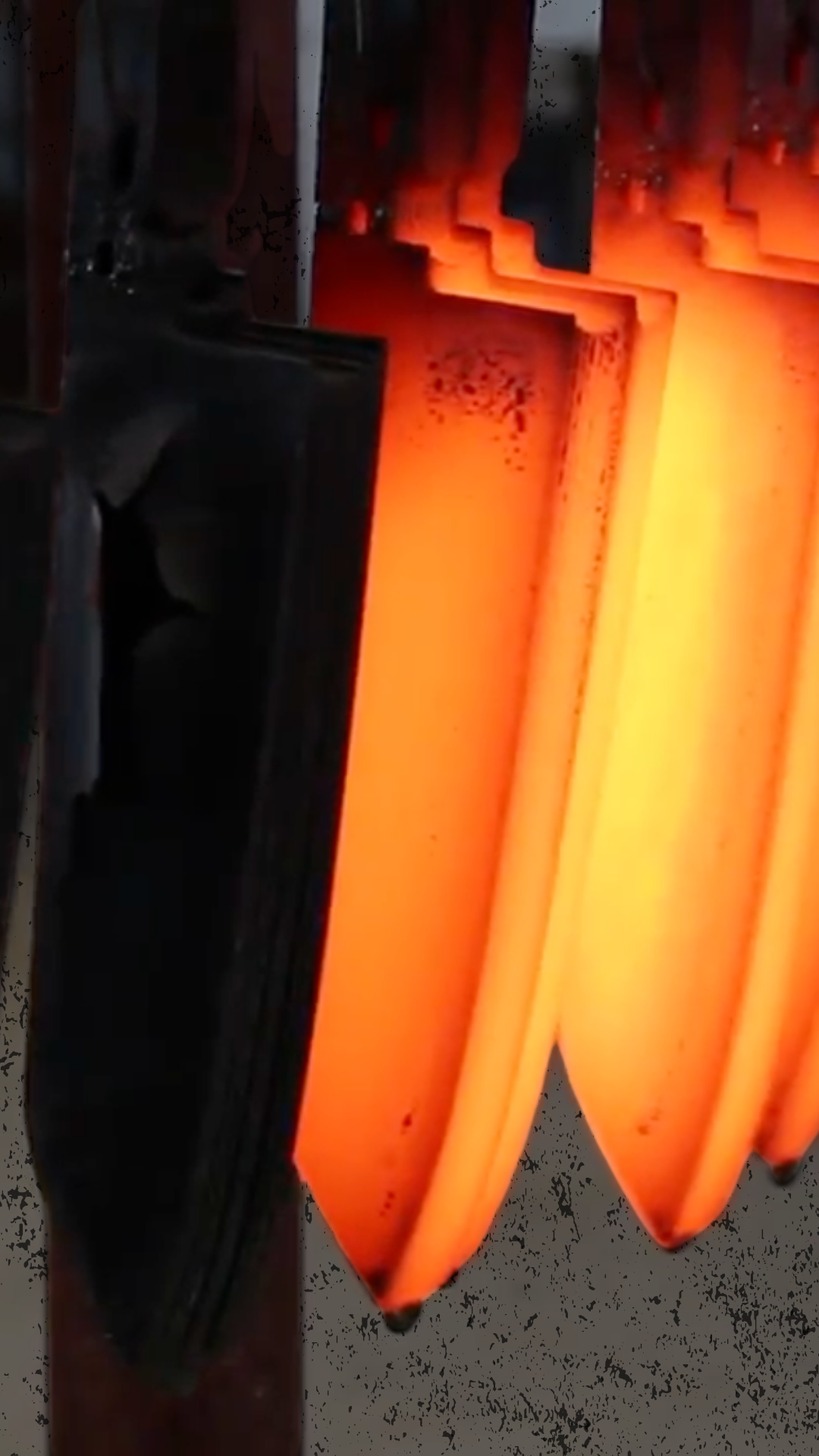
AKA Blue Super: This steel is considered by many to be the best carbon steel available for knife making. Containing elevated levels of carbon, chromium and tungsten and with the addition of molybdenum it is easy to sharpen, gets super sharp, is less reactive to rust, and is less brittle (compared to other carbon steels).
Chemical Composition:
C 1.4-1.5% | Cr 0.3-0.5% | W 2.0-2.5% | Mo 0.3-0.5% | V 0.5%
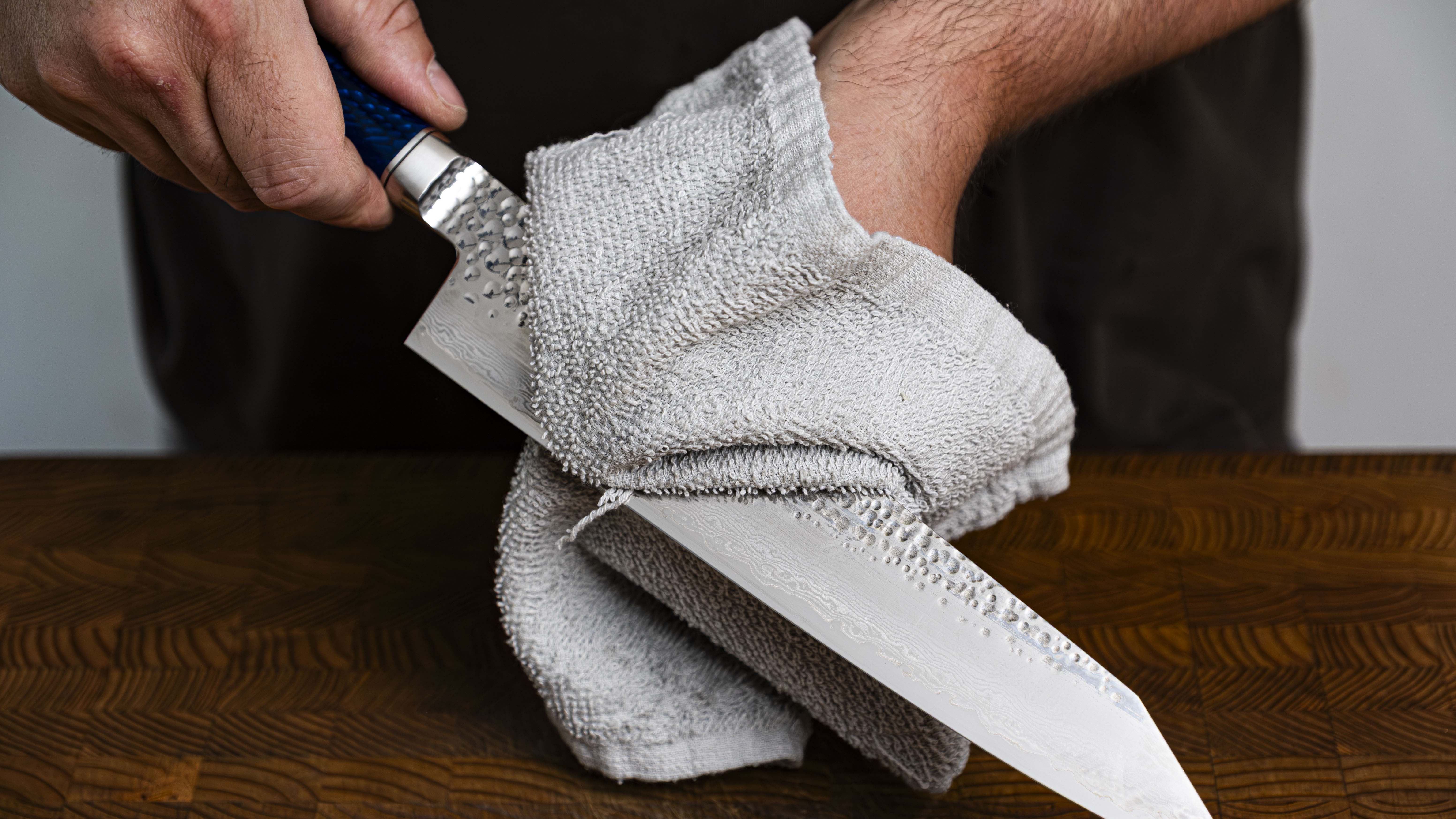
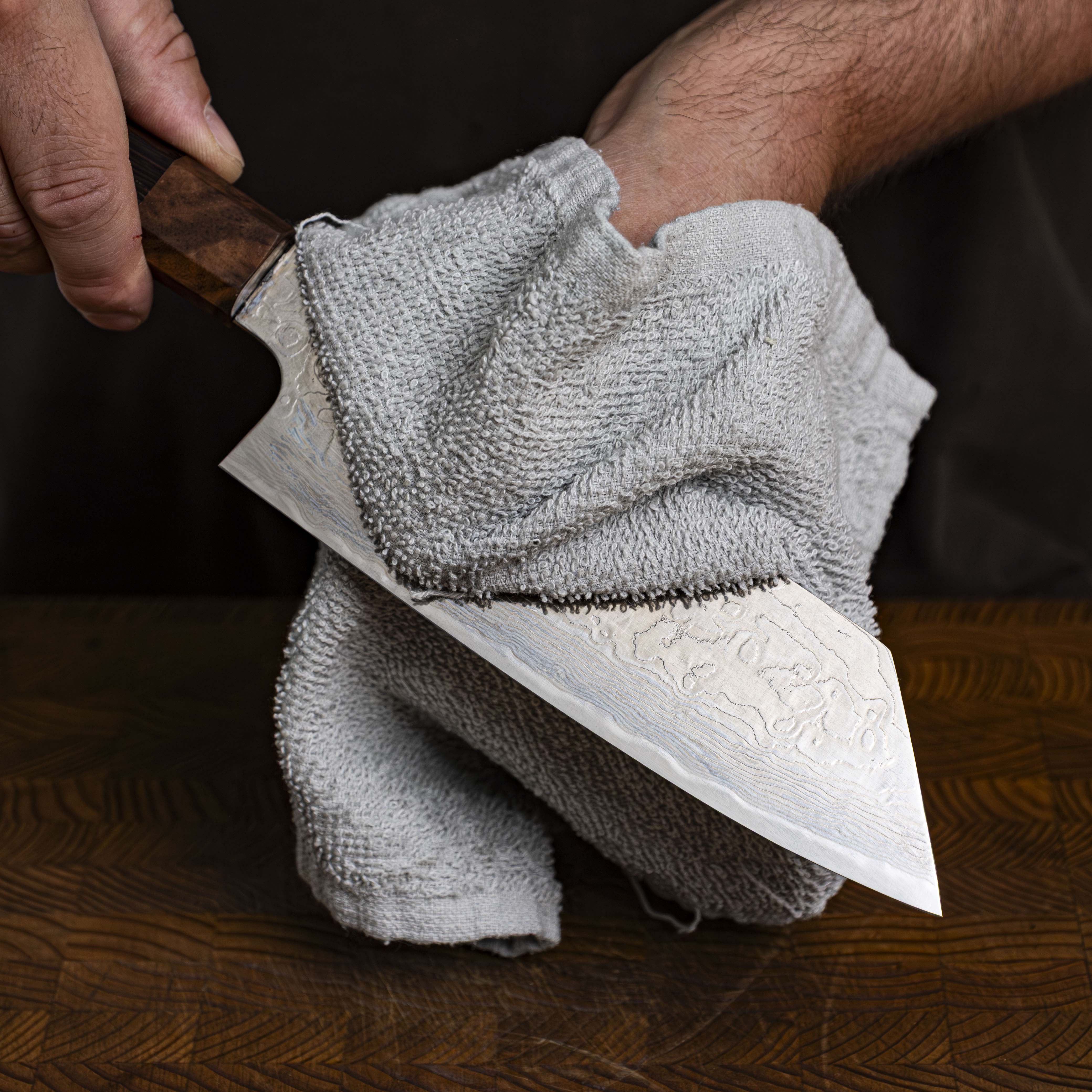
LOW MAINTENANCE
Stainless steel Japanese knives are made in a process called “Sanmai” or “Forge welding” where two softer layers of stainless steel are laminated around a harder core layer of stainless steel. All three of these layers are rust resistant and therefore are not susceptible to rust or discoloration. The softer outer layers of steel are used to make the knife more durable and flexible while the harder core layer is used to provide better edge retention to the blade.

Kenshiro Hatono is a young and very talented smith who opened his own business producing knives in the spring of 2024. He previously worked as an apprentice for 6 years under Katsuyasu Kamo of the Takefu Knife Village in Echizen City, Fukui Prefecture, Japan. He is able to work with a variety of steels producing many different finishes with excellent edge geometry. Though early in his career, he is already highly respected and expected to do great things.
